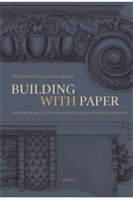In the Theater of Criminal Justice: The Palais De Justice in Second Empire Paris
In the Theater of Criminal Justice: The Palais De Justice in Second Empire Paris
From the publisher:
Focusing on a sensational 1869 murder trial and on the newly designed wing of the Palais de Justice in which it was held, Katherine Taylor explores the representation of criminal justice in Second Empire Paris. She considers the performative aspect of the trial on its new stage and shows how the controversially ornate design of the courtroom created a heightened sense of theatricality for participants and spectators alike, exacerbating conflicting notions about the theory and practice of criminal justice. The tension caused by the blending of the inquisitorial procedure of the ancien régimewith an accusatorial one in the modern criminal courtroom expressed a larger conflict concerning sources and types of authority, their styles, and their bases for judging evidence--a conflict played out in the representation of authority in many public buildings of the post-Revolutionary era.
This work treats the relationship between judicial and political doctrine and social practice in cultural terms, particularly those of architecture, art, and theater. It offers a unique type of architectural history by interpreting a building through its use and users; it differs from most historical studies of trials by concentrating on the stakes of visual representation.





















































































































































